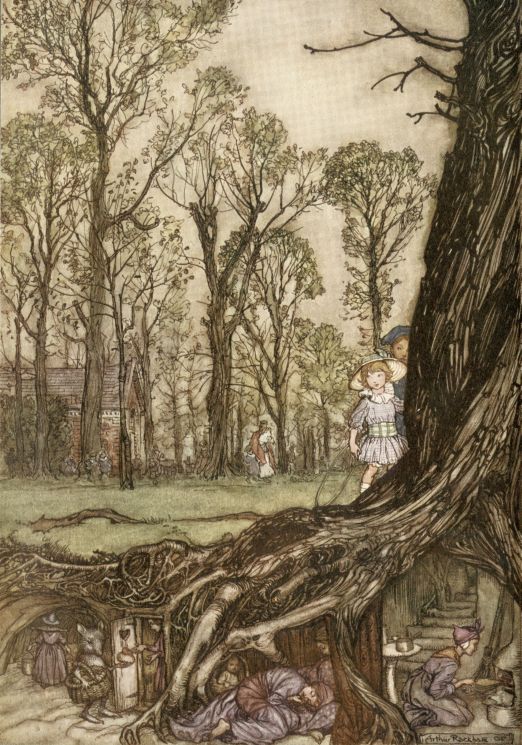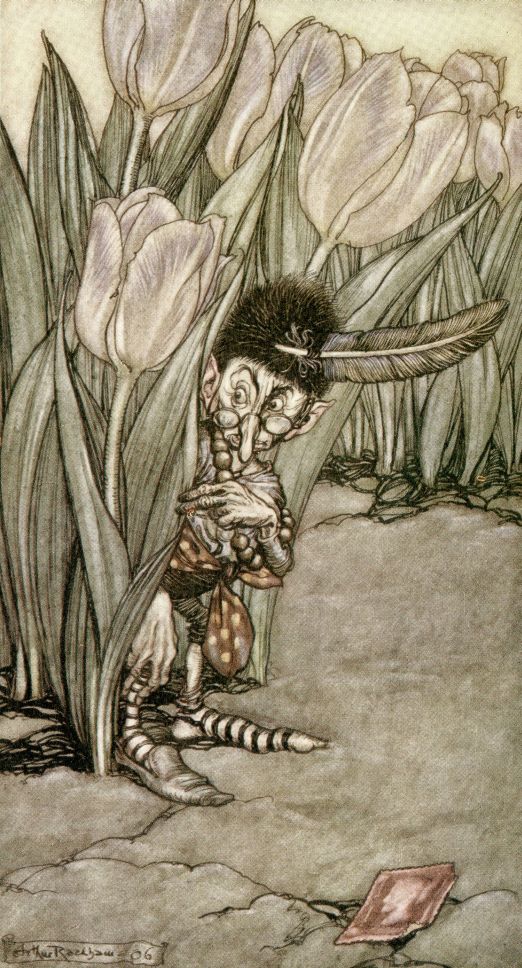
(London: Hodder & Stoughton, 1906) (Burnett (Mark) Collection, Burnett 187)
75 years ago, on 19th June 1937, J.M. Barrie died. The Scottish novelist and playwright is best-known as the creator of Peter Pan, a mischievous boy who never ages, that made his debut in The Little White Bird (1902). Peter Pan, or The Boy Who Wouldn’t Grow Up (1904) saw the character take centre stage in a play that was later adapted into the novel Peter and Wendy (1911). The success of the stage play persuaded publishers Hodder and Stoughton to republish chapters 13 to 18 of The Little White Bird as Peter Pan in Kensington Gardens (1906), a copy of which is held in the Burnett collection of Children’s Literature.
In Peter Pan in Kensington Gardens, Peter (who had begun life part bird, part human) escapes through the window of his London home and flies to Kensington Gardens. His belief that he can fly is shattered when a crow informs him that he is no longer part bird but rather human. Thus stranded, he takes up residence in the gardens. The fairies that already live there are scared of him at first but Peter endears himself to them as their entertainer, playing panpipes at their dances and generally amusing them. It is with the help of Queen Mab and her fairies that he eventually manages to fly home to his mother. His decision to return to Kensington Gardens to bid his farewells proves to be a mistake: in his absence, his mother gives birth to another boy and, having used a second wish to return home, Peter again returns to the gardens, heartbroken and feeling usurped in his mother’s affections. When a girl called Maimie Mannering becomes lost in the gardens, Peter makes a lifelong friend. Although Maimie goes home she never forgets Peter. However, whilst Maimie grows up; Peter spends his time playing and burying the children who become lost at night, giving each a headstone in the gardens.
Arthur Rackham (1867-1939) provided the illustrations for this book and his colour plates added to its popularity. He would go on to illustrate many children’s books, such as Alice’s Adventures in Wonderland (1907) and The Wind in the Willows (1940) and to become one of the most prolific English illustrators of the Edwardian period. His illustrations are characterised by pen and brush-drawn main features and a soft palette of transparent watercolour washes in blues, reds and greens applied over a yellow tone. His illustrations for Peter Pan in Kensington Gardens are typical Rackham: fairies with realistic human traits depicted in naturalistic settings.
Peter Pan in Kensington Gardens and Peter and Wendy were the last novels Barrie would write as, by the 1890s, he had become captivated by theatre. He turned his back on a successful career as a novelist to embark on a career as a dramatist, with mixed fortune.
Since his death, Barrie’s work has, perhaps inevitably, been open to Freudian criticism: he was infatuated by independent, distant women and divorce proceedings had made his failure to consummate his marriage public and, in Peter Pan particularly, you have a character that is unable to engage with adulthood. Yet his reputation has survived psychological and literary scrutiny since Peter Pan remains firmly fixed in popular culture.

(London: Hodder & Stoughton, 1906) (Burnett (Mark) Collection, Burnett 187)
